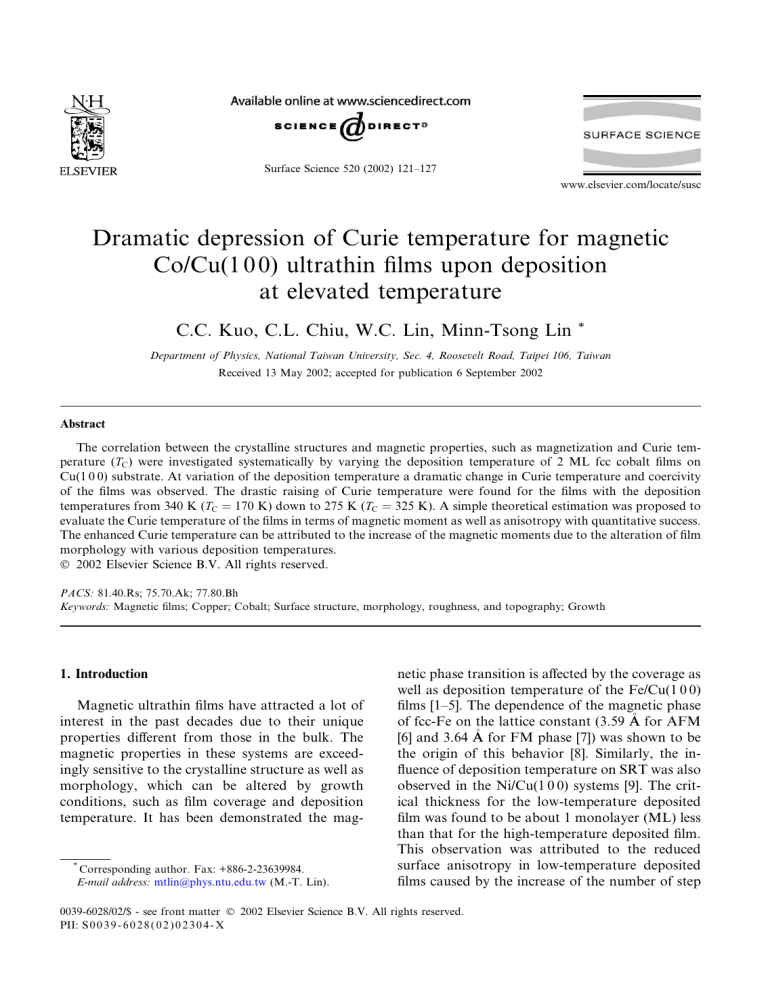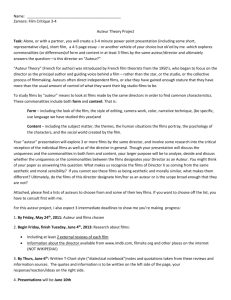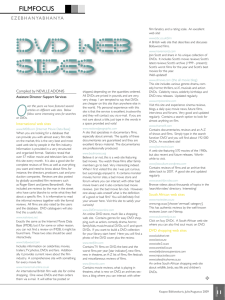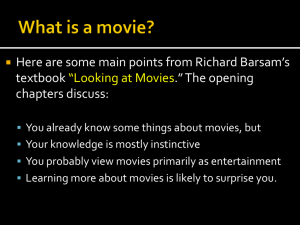
Surface Science 520 (2002) 121–127
www.elsevier.com/locate/susc
Dramatic depression of Curie temperature for magnetic
Co/Cu(1 0 0) ultrathin films upon deposition
at elevated temperature
C.C. Kuo, C.L. Chiu, W.C. Lin, Minn-Tsong Lin
*
Department of Physics, National Taiwan University, Sec. 4, Roosevelt Road, Taipei 106, Taiwan
Received 13 May 2002; accepted for publication 6 September 2002
Abstract
The correlation between the crystalline structures and magnetic properties, such as magnetization and Curie temperature (TC ) were investigated systematically by varying the deposition temperature of 2 ML fcc cobalt films on
Cu(1 0 0) substrate. At variation of the deposition temperature a dramatic change in Curie temperature and coercivity
of the films was observed. The drastic raising of Curie temperature were found for the films with the deposition
temperatures from 340 K (TC ¼ 170 K) down to 275 K (TC ¼ 325 K). A simple theoretical estimation was proposed to
evaluate the Curie temperature of the films in terms of magnetic moment as well as anisotropy with quantitative success.
The enhanced Curie temperature can be attributed to the increase of the magnetic moments due to the alteration of film
morphology with various deposition temperatures.
Ó 2002 Elsevier Science B.V. All rights reserved.
PACS: 81.40.Rs; 75.70.Ak; 77.80.Bh
Keywords: Magnetic films; Copper; Cobalt; Surface structure, morphology, roughness, and topography; Growth
1. Introduction
Magnetic ultrathin films have attracted a lot of
interest in the past decades due to their unique
properties different from those in the bulk. The
magnetic properties in these systems are exceedingly sensitive to the crystalline structure as well as
morphology, which can be altered by growth
conditions, such as film coverage and deposition
temperature. It has been demonstrated the mag-
*
Corresponding author. Fax: +886-2-23639984.
E-mail address: mtlin@phys.ntu.edu.tw (M.-T. Lin).
netic phase transition is affected by the coverage as
well as deposition temperature of the Fe/Cu(1 0 0)
films [1–5]. The dependence of the magnetic phase
for AFM
of fcc-Fe on the lattice constant (3.59 A
for FM phase [7]) was shown to be
[6] and 3.64 A
the origin of this behavior [8]. Similarly, the influence of deposition temperature on SRT was also
observed in the Ni/Cu(1 0 0) systems [9]. The critical thickness for the low-temperature deposited
film was found to be about 1 monolayer (ML) less
than that for the high-temperature deposited film.
This observation was attributed to the reduced
surface anisotropy in low-temperature deposited
films caused by the increase of the number of step
0039-6028/02/$ - see front matter Ó 2002 Elsevier Science B.V. All rights reserved.
PII: S 0 0 3 9 - 6 0 2 8 ( 0 2 ) 0 2 3 0 4 - X
122
C.C. Kuo et al. / Surface Science 520 (2002) 121–127
edge atoms. There also exists the deposition-temperature dependent behavior in Co/Cu(1 0 0). The
coercivity was found to be sensitive to the deposition temperature and annealing history of the
films [10–12]. The morphology of the films plays
an important role to interpret these observations.
Further, the characteristically thermodynamic
property for the ultrathin films is the reduced Curie
temperature (TC ) owing to finite size scaling effect
[8,13–15]. The previous studies for Fe/Cu3 Au(1 0 0)
[16] and Co/Cu(1 0 0) [10–12] also suggest the
variations of TC for the films at different deposition
temperature. Nevertheless, a systematic study is
still lacking to clarify the influence of the deposition temperature on Curie temperature. For better
understanding of the correlation between the Curie
temperature and the deposition temperature of the
ultrathin films, a systematic investigation is of the
utmost importance. In addition, there exists inplane magnetization only in Co/Cu(1 0 0) films for
all coverage of Co [13]. Therefore it is a good
candidate for studying the phase transition between the ferromagnetic and paramagnetic phase,
that is, the Curie temperature of the ultrathin films
without the ambiguity cause by the spin-reorientation transition. In this article, we report on the
significant change in Curie temperature of the Co/
Cu(1 0 0) ultrathin films at variation of the deposition temperature. The analyses of the structure
were performed in situ to provide a quasi-simultaneous structural information with the magnetic
measurements. The Curie temperature was found
to be drastically enhanced while lowering the deposition temperature below 250 K. We also proposed a simple theoretical estimation to evaluate
TC of the films deposited at different temperatures.
It will be shown that the enhanced Curie temperature is accompanied by the increase of remanent
Kerr signal, which may be due to the change of the
number of the island edge atom at the alteration of
morphology.
2. Experiment
The experiments were carried out in an ultrahigh vacuum chamber with the base pressure
of 5 1010 mbar. Auger electron spectroscopy
(AES), low-energy electron diffraction (LEED),
medium-energy electron diffraction (MEED),
magneto-optical Kerr effect (MOKE), ion beam
sputter, and molecular beam epitaxy evaporators
were installed in this chamber for the in situ study.
The Cu(1 0 0) substrate was cleaned by cycling processes of 2-KeV argon ion bombardment and annealing to 800 K for 5 min. The crystallographic
ordering and cleanness of the surface were checked
by LEED and AES, respectively. The background
pressure during cobalt evaporation was kept at
1 109 mbar under the deposition rate of 0.5 ML
per min. The layer-by-layer growth of cobalt films
was simultaneously monitored by MEED during
the thermal evaporation process such that the
coverage of the ultrathin films can be precisely
controlled in the accuracy of 0.05 ML. The thickness of films was also confirmed by means of AES.
After the film being deposited, the crystalline
structure and interlayer distance of the surface
were measured at the temperature of 200 K via
LEED and LEED IðEÞ in the kinematic approximation [17,18], respectively. The MOKE measurement comprises He–Ne lasers (k ¼ 632:8 nm)
as the light sources and a photodiode as the light
detector. In addition, the photoelastic modulator
combined with the Lock-in technique were applied
in our measurements for the acquisition of signals
in a good signal to noise ratio. The magnetic
hysteresis loops were taken by means of the longitudinal MOKE which is normalized by reflected
beam intensity to ensure the magnitude of Kerr
intensity can be compared for various measurements. The remanent Kerr signal versus temperature was used to determine the Curie temperature
of the films.
3. Results
As introduced, the Curie temperature is sensitively affected by the coverage of the films [8,13–
15] owing to the finite size scaling effect. For Co/
Cu(1 0 0), TC decreases linearly with thickness from
580 K for 3 ML to 120 K for 1.5 ML [13,19]. Thus,
the determination of the film coverage plays an
important role in our experiments. By well controlling deposition rate associated with the MEED
C.C. Kuo et al. / Surface Science 520 (2002) 121–127
intensity monitoring shown in Fig. 1, the films can
be prepared with accuracy of the coverage less
than 0.05 ML [20]. Fig. 1 shows the MEED intensity oscillations for 2 ML Co/Cu(1 0 0) grown at
different temperatures. Also, the MEED intensity
of Co/Cu(1 0 0) oscillates up to 7 ML was shown in
the inset. One can see that the amplitude of the
first peak is less than that of the second peak for
the reason that Co grows in partial two-layer-thick
islands for the coverage below 2 ML to form the
first layer [21,22]. Moreover, the equal spacing
oscillations shown in the inset of Fig. 1 point out
the deposition rate in our experiments is well
controlled. Obviously the first peak of MEED intensity is more suppressed for the films grown at
lower temperature. The previous study has shown
that the damping diffraction intensity oscillation
means pronounced roughness of the film [23].
Thus, our results imply that the morphology of the
films deposited at lower temperature are rougher
than that at the higher temperature, as the previous observation indicated [10,24]. This tendency
can also be observed in the LEED pattern, in
which the LEED spots for the films deposited at
lower temperature were broader than those at
higher deposition temperature.
The hysteresis loops of the Co films were measured in situ by longitudinal MOKE at various
temperatures after the film deposited. The hysteresis loops of 2 ML Co grown upon Cu(1 0 0) at 325
and 225 K for different measurement temperature
are shown in the left and right column of Fig. 2,
respectively. It is manifest that the shape of the
loops varies gradually from the square loop at low
temperature to the flat curve at high temperature
at which ferromagnetic ordering is broken.
The Curie temperature for the films was determined by sequentially taking hysteresis loops and
measuring the remanent Kerr signals as a function
of temperature. As depicted in Fig. 4 (the solid
circles and curve), the Curie temperature of the 2
ML Co keeps almost invariant for the deposition
temperatures (Td ) from 125 to 250 K but drops
rapidly as Td higher than 275 K. For Td ¼ 340 K, it
is clear that TC reaches an amazing value 170 K,
which is about half of that (325 K) for Td ¼ 125 K.
Furthermore, the critical exponent b [M=Ms b
ð1 T =TC Þ ] was also estimated by fitting the
curves for magnetization as a function of temperature, as shown in Fig. 3 (Td ¼ 325 K). The average value of b for the films deposited at different
2 ML Co/Cu(100) grown at 325K
2 ML Co/Cu(100) grown at 225K
285K
345K
280K
Kerr Intensity (arb. units)
Fig. 1. MEED intensity oscillations for 2 ML Co/Cu(1 0 0) for
various deposition temperatures. The inset shows that the
MEED intensity oscillates with the coverage of Co up to 7 ML.
123
335K
270K
260K
330K
250K
320K
240K
290K
230K
260K
215K
230K
200K
200K
185K
170K
170K
-30 -20 -10
0
10
20
30
Magnetic Field (Oe)
-24 -16 -8 0
8 16 24 32 40
Magnetic Field (Oe)
Fig. 2. Magnetic hysteresis loops for the 2 ML Co/Cu(1 0 0)
films deposited at 325 K (left) and 225 K (right) at various
measurement temperatures.
124
C.C. Kuo et al. / Surface Science 520 (2002) 121–127
10
M(T)/M(0) = (1-T/T )
350
β
2 ML Co/Cu(100)
0.5
4
0.4
0.3
0.2
2
0.1
0.365 (3d-Heisenberg)
0.325 (3d-Ising)
0.23 (2d-XY)
0.125 (2d-Ising)
150 200 250 300 350
Deposition Temperature (K)
0
170 180 190 200 210 220 230 240
Measurement Temperature (K)
Fig. 3. The Kerr intensity versus measurement temperature for
the film deposited at 325 K. The solid curve is the curve fitting
of critical exponent b. Inset: critical exponent b of the 2 ML Co/
Cu(1 0 0) films for different deposition temperatures (Td ). The
dotted lines stand for the value expected by the theoretical
models.
temperatures is about 0.24 which lies close to the
value expected by two-dimensional xy model [25]
(b 0:23), as shown in the in set of Fig. 3. It
implies that the 2 ML-Co/Cu(1 0 0) films reveal
the near two-dimensional magnetic behavior with
fourfold symmetry. Our results for hysteresis loops
with various in-plane angles also show the existence of biaxial anisotropy in these systems. In
addition, there is no significant variance (excepted
for the Td ¼ 275 K case with the larger error bar)
for all films with different deposition temperatures.
This suggests that the enhancement of Curie temperature is not intrinsically correlated to the critical exponent b of the film.
4. Theoretical estimation of TC
The remanent Kerr signal and coercivity for the
film deposited at 225 K are greater than those at
325 K, as shown in Fig. 2. It implies that the
variation of Curie temperature may be attributed
to the deviation of remanence as well as coercivity.
The Curie temperature has been shown to be
proportional to the square of the magnetic mo-
300
250
200
Kerr Intensity (arb. units)
6
Curie Temperature (K)
β =0.249
8
β
Kerr Intensity (arb. unit)
c
a
T = 325 K
g
b
T = 225 K
g
-30 -20 -10 0 10 20
Magnetic Field (Oe)
150
100
30
150
200
250
300
Deposition Temperature (K)
350
Fig. 4. Curie temperature (TC ) of the 2 ML Co/Cu(1 0 0) films
for different deposition temperatures (Td ). The solid circles are
the results in the experiments, the hollow ones are the simulated
results from the remanent magnetization and coercive field
taken at 200 K, as described in text. The hysteresis loops
measured at 200 K for the films grown at 325 and 225 K are
shown in the inset. Note that the ratio of remanent Kerr signal
for 325 K (a) to that for 225 K (b) is a : b ¼ 1 : 1:1.
ment in the films [26,27]. By comparing the hysteresis loops measured at 200 K, one can find that
the Kerr remanent signal (the same as the saturation one in these cases), which is proportional to
the magnetization density, for Td ¼ 225 K is about
1.1 times of that for Td ¼ 325 K, as shown in the
inset of Fig. 4. It can therefore induce about 20%
enhancement of Curie temperature. It turns out
that the enhancement of magnetization density for
the low-temperature deposited films is the main
contribution to the raising of the Curie temperature.
However, there is still a little deviation from the
raising of Curie temperature taken in our study. In
comparison with the films deposited at 225 K, the
TC enhancement for the 325 K-deposited films is
about 9% deviation from the value estimated by
considering the enhanced Kerr signals only. In
addition to magnetization density, the Curie temperature depends on magnetic anisotropy as well.
From the theory of the transition temperature
of ultrathin films by means of renormalization
group analysis [28], the two-dimensional transition temperature is shown to be proportional to
C.C. Kuo et al. / Surface Science 520 (2002) 121–127
125
1
½lnðp2 J =KÞ , where J and K are the coupling
constant in Heisenberg model and anisotropy
constant, respectively. If one attributes this deviation to the difference of the anisotropies between
these two films, the anisotropy of the film deposited at 225 K can be estimated to be 2.47 times of
that at 325 K (for K=J 103 ). Surprisingly, it
agrees well with the difference of the coercivity
taken in the hysteresis loops for the films at
Td ¼ 325 and 225 K. From the energy point of
view, the film with the larger anisotropy energy is
more difficult to reverse its magnetization by applied field and therefore reveals the larger coercivity. Thus, the 9% deviation may be corrected by
taking the anisotropy into account. The relation of
different Curie temperatures TC;1 and TC;2 can be
therefore expressed as
TC;1 M12 ln½p2 J =K2
¼
TC;2 M22 ln½p2 J =K1
ð1Þ
by taking both the magnetization density and anisotropy into consideration. The simulated results
are shown in Fig. 4 (the hollow circles and dashed
curve). One can see that they agree fair well with
the measured results.
5. Discussion
By precisely controlling the film thickness, the
influence of thickness on Curie temperature can be
excluded in our study. In addition to the coverage,
the Curie temperature can be altered by the magnetization density as well as the magnetic anisotropy of the deposited films. The origins that affect
remanence and coercivity for ultrathin films at
different deposition temperatures may be the following: crystalline structure such as lattice distortion and strain relaxation, chemical structure due
to interdiffusion between the magnetic overlayer
and non-magnetic substrate, and morphology of
the systems. To clarify these possible contributions, further analyses are indispensable.
By performing the LEED IðEÞ measurements,
the average vertical interlayer distance a? can be
determined in the kinematic approximation [17,18].
Fig. 5 shows the vertical interlayer distance of 2
Fig. 5. Vertical interlayer distance (a? ) of the 2 ML Co films
for different deposition temperatures. The dashed line indicates
a? for the Cu substrate along [1 0 0] direction. All the measurements were made at 200 K after the films being deposited.
ML Co films for a series of deposition temperatures. Due to the lattice mismatch between Co
overlayers and Cu substrate at the interface, there
exists the lattice distortion along the [1 0 0] direction perpendicular to the film surface. For this
reason, a? of Co in Co/Cu(1 0 0) is slightly less
than that of Cu single crystal, as indicated in Fig.
5. No significant deviation on a? can be observed
for all the deposition temperatures within the ac. It indicates that there is no
curacy of 0.02 A
strain variation for the films at all deposition
temperatures. The total volume of the Co atoms
also keep unchanged for all the films at different
growth temperatures. Furthermore, the variation
of the AES ratio of Co to Cu at different deposited-temperature films is insignificant. It means
that Co atoms have not diffused deeply into the Cu
substrate. This agrees with the previous studies
that the onset temperature of the interdiffusion in
Co/Cu(1 0 0) system was found to be >400 K
[13,21,22].
Since neither crystalline nor chemical structure
was obviously altered by varying deposition temperature, the variation of the Kerr signal as well as
anisotropy and, correspondingly, the Curie temperature should be driven by other origins. As
mentioned above, the MEED intensities in Fig. 1
as well as LEED patterns of our experiments
suggest that the films deposited at lower temperature reveal pronounced roughness in comparison
to those deposited at higher temperature. As a
result, the Curie temperature of Co/Cu(1 0 0) films
is apparently modified by their morphology. In
more detail, the rougher morphology of the films
126
C.C. Kuo et al. / Surface Science 520 (2002) 121–127
implies the larger ratio of surface to volume atoms
due to the island formation. The total magnetization densities increase since the magnetic moments
for the Co atoms at the island edge are enhanced
due to the reduced coordinate number in comparison to the bulk atoms, as already indicated in
the previous studies [29–33]. Furthermore, Weber
et al. [34] reported the morphology-induced oscillations of the magnetic anisotropy in Co/Cu(1 0 0).
The authors observed that the variation of the
morphology resulting from the alternation between filled and incompletely filled atom layers
during the film deposited could also cause the
change in magnetic anisotropy of Co/Cu(1 0 0).
6. Conclusion
By conducting the systematic investigation, we
studied the correlation between the deposition
temperature and Curie temperature for the ultrathin Co/Cu(1 0 0) films. The dramatic enhancement of Curie temperature was observed for the
film with variation of deposition temperatures
from 340 to 275 K. In addition, the remanent Kerr
signal as well as coercive field for the films at lower
deposition temperatures were found to be larger
than those at higher deposition temperatures. Our
further analysis shows that the enhanced magnetization density and anisotropy are responsible for
the increase of Curie temperature of the films. It
indicates that the Curie temperature of ultrathin
films is strongly influenced not only by the thickness of the film, but also by the temperature at
which the film was deposited. The surface morphology variation ar different deposition temperatures, which affects the surface magnetic moment
as well as anisotropy, plays an important role on
this Curie temperature enhancement upon cryogenic deposition.
Acknowledgements
This research was granted by the National Science Council through the contract #NSC-91-2112M-002-058 and MOE program for Promoting
Academic Excellence of Universities.
References
[1] J. Thomassen, F. May, B. Feldmann, M. Wuttig, H. Ibach,
Phys. Rev. Lett. 69 (1992) 3831.
[2] D. Li, M. Freitag, J. Pearson, Z.Q. Qiu, S.D. Bader, Phys.
Rev. Lett. 72 (1994) 3112.
[3] S. M€
uller, P. Bayer, C. Reischl, K. Heinz, B. Feldmann, H.
Zillgen, M. Wuttig, Phys. Rev. Lett. 74 (1995) 765.
[4] R.D. Ellerbrock, A. Fuest, A. Schatz, W. Keune, R.A.
Brand, Phys. Rev. Lett. 74 (1995) 3053.
[5] R. Allenspach, A. Bischof, Phys. Rev. Lett. 69 (1992)
3385.
[6] S.H. Lu, J. Quinn, D. Tian, F. Jona, P.M. Marcus, Surf.
Sci. 209 (1989) 364.
[7] G.L. Krasko, G.B. Olson, J. Appl. Phys. 67 (1990) 4570.
[8] U. Gradmann, Magnetism in ultrathin transition metal
films, in: K.H.J. Buschow (Ed.), Handbook of Magnetic
Materials, vol. 7, Elsevier Science Publishers, Amsterdam,
1993, pp. 1–96, Ch. 1.
[9] M. Zheng, J. Shen, P. Ohresser, C.V. Mohan, M. Klaua, J.
Barthel, J. Kirschner, J. Appl. Phys. 85 (1999) 5060.
[10] M.T. Kief, G.J. Mankey, R.F. Willis, J. Appl. Phys. 69
(1991) 5000.
[11] G.J. Mankey, M.T. Kief, R.F. Willis, J. Vac. Sci. Technol.
A 9 (1991) 1595.
[12] H.P. Oepen, S. Knappmann, W. Wulfhekel, J. Magn.
Magn. Mater. 148 (1995) 90.
[13] C.M. Schneider, P. Bressler, P. Schuster, J. Kirschner,
Phys. Rev. Lett. 64 (1990) 1059.
[14] C. Domb, J. Phys. A 6 (1973) 1296.
[15] F.J. Himpsel, J.E. Ortega, G.J. Mankey, R.F. Willis, Adv.
Phys. 47 (1998) 511–597.
[16] M.-T. Lin, J. Shen, W. Kuch, H. Jenniches, M. Klaua,
C.M. Schneider, J. Kirschner, Phys. Rev. B 55 (1997)
5886.
[17] M. Zharnikov, A. Dittschar, W. Kuch, C.M. Schneider, J.
Kirschner, Phys. Rev. Lett. 76 (1996) 4620.
[18] M.-T. Lin, J. Shen, W. Kuch, H. Jenniches, M. Klaua,
C.M. Schneider, J. Kirschner, Surf. Sci. 410 (1998)
290.
[19] J.J. de Miguel, A. Cebollada, J.M. Gallego, S. Ferrer, R.
Miranda, C.M. Schneider, P. Bressler, J. Garbe, K. Bethke,
J. Kirschner, Surf. Sci. 211/212 (1989) 732.
[20] M.-T. Lin, W.C. Lin, C.C. Kuo, C.L. Chiu, Phys. Rev. B
62 (2000) 14268.
[21] L. Gonzalez, R. Miranda, M. Salmer
on, J.A. Verges, F.
Yndurain, Phys. Rev. B 24 (1981) 3245.
[22] H. Li, B. Tonner, Surf. Sci. 237 (1990) 141.
[23] J.A. Stroscio, D.T. Pierce, R.A. Dragoset, Phys. Rev. Lett.
70 (1993) 3615.
[24] Q.Y. Jin, R. Vollmer, H. Regensburger, J. Kirschner, J.
Appl. Phys. 85 (1999) 5288.
[25] S.T. Bramwell, P.C.W. Holdsworth, J. Phys.: Condens.
Matter 5 (1993) L53.
[26] S. Chikazumi, S.H. Charap, Physics of Magnetism, John
Wiley & Sons, New York, 1964.
C.C. Kuo et al. / Surface Science 520 (2002) 121–127
[27] R.M. White, Quantum Theory of Magnetism, SpringerVerlag, Berlin Heidelberg, 1983.
[28] R.P. Erickson, D.L. Mills, Phys. Rev. B 43 (1991) 11527.
[29] P. Srivastava, F. Wilhelm, A. Ney, M. Farle, H. Wende, N.
Haack, G. Ceballos, K. Baberschke, Phys. Rev. B 58 (1998)
5701.
[30] W. Clemens, T. Kachel, O. Rader, E. Vescovo, S. Bl€
ugel,
C. Carbone, W. Eberhardt, Solid State Commun. 81 (1992)
739.
127
[31] M. Tischer, O. Hjortstam, D. Arvanitis, J.H. Dunn, F.
May, K. Baberschke, J. Trygg, J.M. Wills, B. Johansson,
O. Eriksson, Phys. Rev. Lett. 75 (1995) 1602.
[32] A.B. Shick, D.L. Novikov, A.J. Freeman, J. Appl. Phys. 83
(1998) 7258.
[33] Q.Y. Jin, H. Regensburger, R. Vollmer, J. Kirschner, Phys.
Rev. Lett. 80 (1998) 4056.
[34] W. Weber, C.H. Back, A. Bischof, C. W€
ursch, R.
Allenspach, Phys. Rev. Lett. 76 (1996) 1940.




